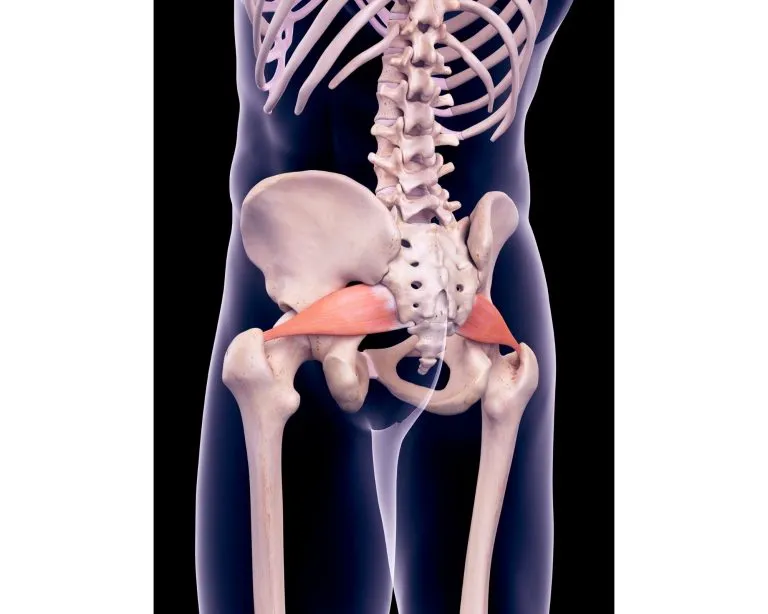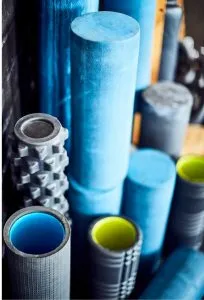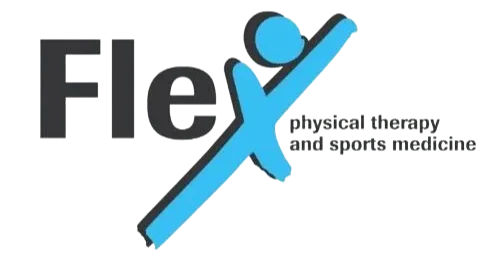Hi, Mike Uhrlaub here. I’ve been a back-pain specialist for over 22 years; Helping those 30 and older get rid of their back-pain issues for good. Today I’d like to show you how to improve your back-pain and flexibility in 48-hours without medical treatment. These techniques work quickly and effectively.
Just to name a few… Even if you have arthritis, degenerative disc disease, disc bulges, disc herniations, sciatica, spinal stenosis, scoliosis, or even postural dysfunction. Those are just labels. They are not the cause of the problem.
The root cause of the problem are the imbalances within the muscular system. These imbalances have placed increased stress on your lower back.
Some of these imbalances include a Hypertonic Muscles. Hypertonic means the muscles can really contract up. Some of these muscles are:
- The psoas muscle comes off the front of the spine, hooks in with another muscle in front of your pelvis, inserts and attaches to the front of the thigh/femur.
- The piriformis muscle comes across and through the buttock area.
- The quadratus lumborum muscle attaches along the transverse processes across the hip and then into the ribs.
Not only are there imbalances in muscles, but you also have significant weakness through the gluteal muscles, hamstrings, and lower abdominals.
Today we’re going to talk about the piriformis and the quadratus lumborum.

Piriformis
- Remember, this muscle comes through the buttock area.
- A thin muscle that lays underneath the gluteal muscle attaching to the femur.
- This is one of the main causes of sciatica.
- The sciatic nerve comes off of the lumbar spine going under/over/through that muscle.
- When the piriformis gets tight it exerts a lot of pull which then causes stress on the lower back.
Quadratus Lumborum
- The square muscle located in the lower back.
- When this muscle gets triggered up it becomes painful in the lower back.
One of the fastest ways we can improve this pain and flexibility is to work on shutting off the piriformis and the quadratus lumborum.
There are really good ways to do that, but I want to show you how to do it with a foam roller, and then using either a racquetball or tennis ball.

Foam Roller
- You can find these anywhere… Walmart…Target…
- There is a tremendous amount of uses for them.
- Start off with the foam roller on the floor next to you.
- Slowly roll up on the foam starting at the top of the buttocks. You want to be half on and half off.
- Use one hand in front for support and the other behind you on the roller.
- Use your legs to roll right over top of that muscle. (You know you hit the muscle when you start to experience discomfort.)
- Once you hit that medium discomfort level, relax letting your bodyweight sink over it, and hold for 60-seconds
- After one-minute roll off the foam roller, take a rest, then go for another 60-seconds.
Notes
- You only want about medium discomfort. DO NOT TAKE THIS TO THE POINT OF EXRUCIATING PAIN.
- You do have a bony piece that sticks out called The Greater Trochanter. YOU DO NOT WANT TO BE ON THAT. It will be painful and can cause bursitis and other issues.
- You shouldn’t need to do this more than two sets.
For some folks, the foam roller may not be enough or may not work as well. In that case, what you can do is use a tennis ball or a racquetball. The racquetball is just a little softer with more give than a tennis ball but it is smaller.
I like the tennis ball for this application.
Tennis Ball
- You’re going to do the same thing you did with the foam roller.
- Take the tennis ball and slide it underneath and into your glute area.
- Roll until you get the tennis ball right over the triggered up hypertonic piriformis muscle
- You may have to go on your backhand a little bit for balance
- Hold the position for 60-seconds.
- Let up by rolling off and relax.
- Repeat for another 60-Seconds.

Notes
- This is a little bit more aggressive.
- Don’t take this to the point of a lot of pain. Stay at a medium level of discomfort.
- These are releases you do NO MORE than about THREE times a week. Do not do them every day.
Now… The other muscle we talked about was the quadratus lumborum, which was that rectangular square muscle that goes along the transverse processes of the lumbar spine. Then comes across the top of the pelvis and comes up attaching to the ribs.
When the quadratus lumborum gets contracted, it will pull your pelvis up, and pull your lumbar spine out of alignment. It really causes a lot of pain and discomfort.
Foam Roller
- Start off with the foam roller at the upper part of the back (more towards the ribs).
- Make sure you’re in a half roll over position; You do not want to be directly on your side.
- Put your weight on either your elbow or hand.
- Use your legs to help roll yourself up onto the foam roller.
- Rock and roll until you feel some discomfort over the triggered-up hypertonic quadratus lumborum muscle. Find the medium.
- Hold for 60-seconds.
- Relax.
- Repeat 4-5 times.
If the foam roller doesn’t work as well for you, you can again use a tennis ball or racquetball. For the quadratus lumborum I prefer the racquetball. It’s a little bit softer and seems to work a better for me. But I have had a lot of patients who like the tennis ball as well. Either one is good.

Racquetball
- You’re going to do the same thing you did with the foam roller.
Place the ball in the area of the lower back where the trigger point is.
- Lay on top of the ball.
- Rock until you move the ball right over the trigger point and apply pressure. Find the medium.
- Hold for 60-seconds.
- Relax.
- Repeat 4-5 times.
Notes
- Do these three times a week.
Monday, Wednesday, Friday… Or … Tuesday, Thursday, Saturday.
- Just make sure you take time off in between.
- After these trigger point and pressure point releases you can ice over the area to decrease inflammation and tenderness.
I sat for about 15 minutes immediately afterwards. It will really give you a lot of benefit.
There you have it! That is how you can improve back pain and flexibility in 48 hours without medical treatment!
If you have any questions, please feel free to contact me at mike@flex-pt.com.
If you benefitted or felt this really helped you… Please share this with your family and friends. For more tips on how to reduce pain, inflammation, and increase your mobility check out our Facebook page.
Until next time! I’ll see you soon.


